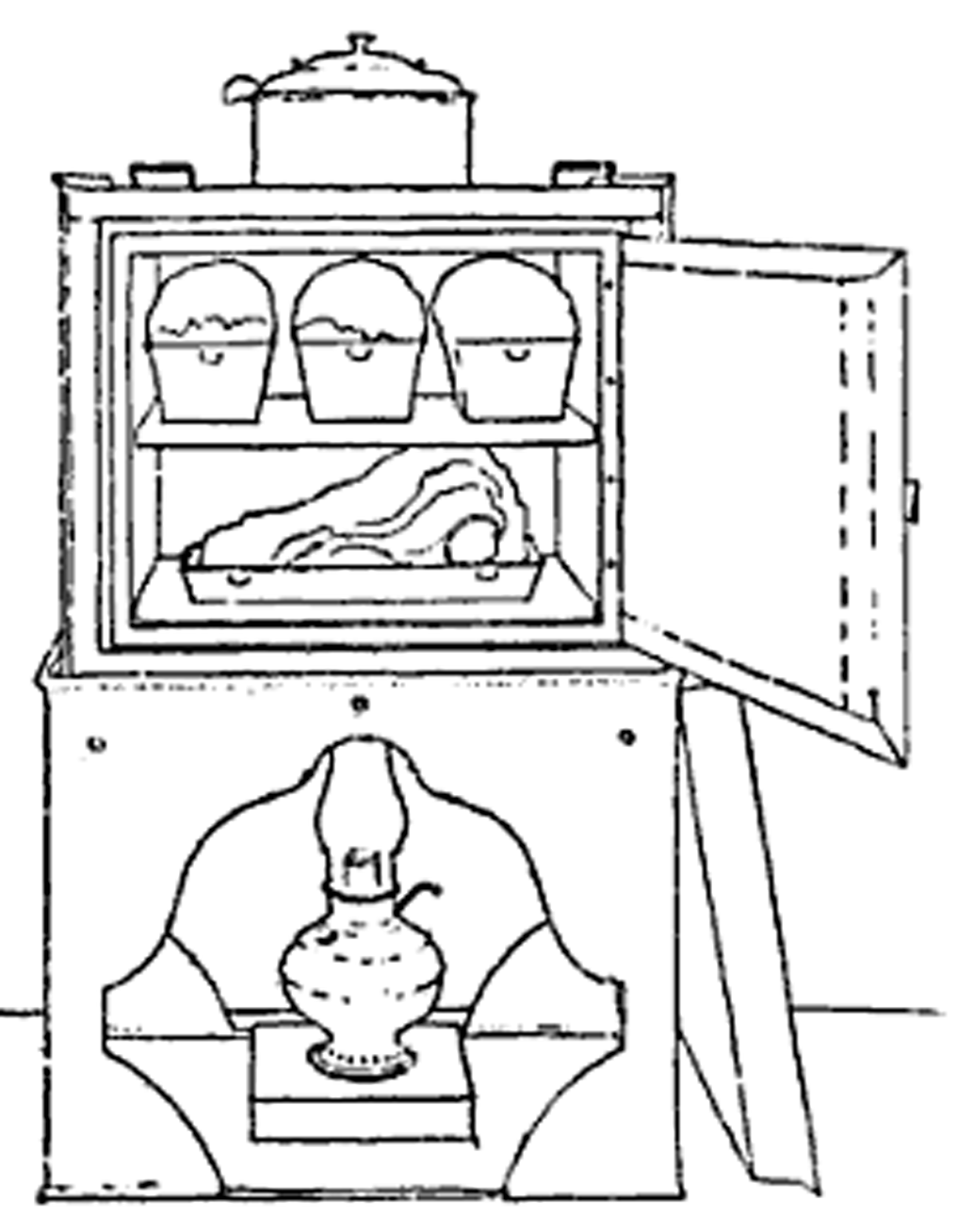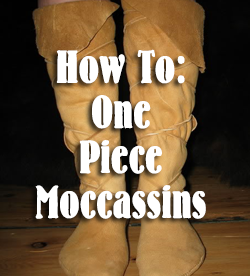The Aladdin Oven
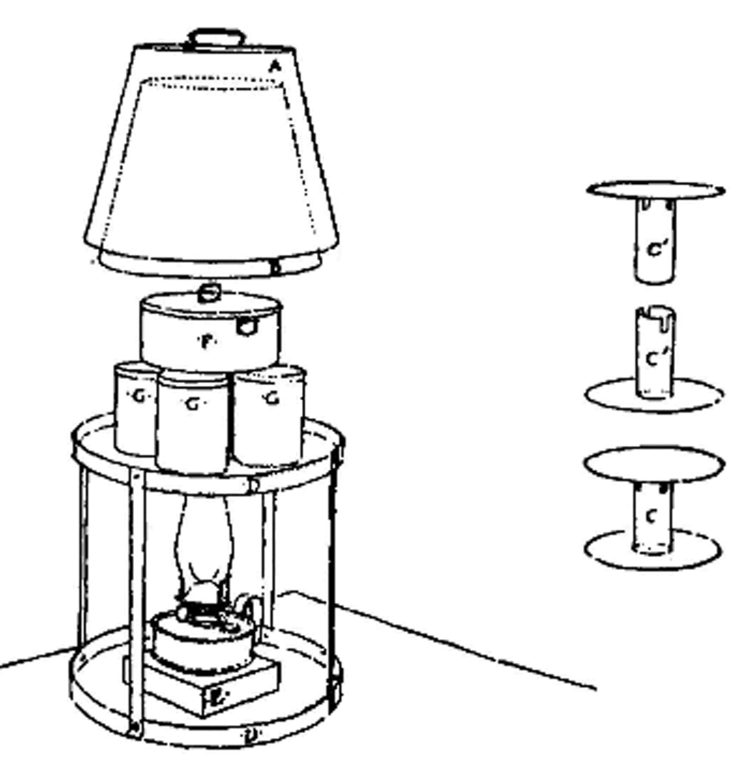
What It Is. It occurred to me one day that heat could be put into a box, kept there, and converted into work the work of cooking.
What sort of a box? an iron box? no, iron will not hold the heat, it wastes it, and seems to cook the cook and not the victuals. The ovens of stoves and ranges,are iron boxes and are therefore not fit to be used.
Why should the iron boxes which make the ovens of iron stoves and ranges be ventilated? Because in order to cook food in them at all, such an excess of heat must be applied that they become fat boilers, or fat-rendering machines ; thu foul smells generated in this process are not wanted in any house.
What is the effect of this process on the food ? This boiling or rendering is a process of partial distillation or dissociation; the fats are "cracked" as the chemists term it the finer volatile parts and flavors are thrown off, generating unpleasant smells in the process, while the residue of the fat is left in a gross and indigestible condition with the other tissues which are deprived of their fine flavor.
That is the reason why it does not much matter what one calls for at many hotels and restaurants, all the meat tastes alike or is tasteless alike.
Why not, then, apply heat directly to the food in an oven like the common kerosene stove oven ?
For many reasons : If the lamp smokes or smells the food is tainted ; the direct heat scorches or burns without the slow penetration which is needed in fine cooking; the direct heat also dessieates the food and drives off the fine volatile flavors.
Conclusion – All metal ovens, all ventilated ovens and all ovens in which excessive heat is applied to food, are more or less unsuitable to fine cooking. To that radical conclusion my observations have led me.
Having cleared away the obstructions by condemning almost every kind of apparatus now in use except, of course, a well-devised broiler to be used over charcoal or an old fashioned brick oven or a tin kitchen before an open fire the next question was :
What can be done about it ?
Men have no right to scold their wives, or use swear words about the cook, and find fault with their meals in a constant and promiscuous way, if they only supply them with apparatus to cook with that is not fit to be used ; or which is so infernal in the heat that it generates, as to make it no wonder that those who have been of an angelic type and temper before beginning to keep house, should exhibit a capacity of another kind afterwards which may vex a patient man but ought not to cause him to complain.
The way out of this dilemma is for every boy to be put in the way of learning how to make first-rate bread, and to do all kinds of plain cooking, in one lesson of one hour by a little teaching in the simple principles. Girls may be taught as well, if they can spare the time from more important duties.
In the Aladdin Oven, the heat is put into an outer oven made of non-metallic and nonheat conducting material, which is, in fact, a form of stiff paper, made from wood pulp combined with other substances. Inside is a food receptacle nearly as large as the outer oven, made of sheet metal.
The heat passes around the thin iron wall of the inner oven through which it penetrates in even measure. This inner oven is closed so that the products of combustion and the direct drying heat of the lamp cannot enter it. It is provided with a ventilator which is used only in special cases.
The Standard Aladdin Oven has an inside space 18 inches in width, 12 inches in depth, and 14 inches in height ; it is fitted with movable shelves so as to divide it horizontally into not over four compartments. An oven of extra size with a cooking space 21 by 13 by 15 inches is made on special orders. Cylindrical Ovens suitable for cooking for two to six persons are in progress, but the exact dimensions and prices cannot yet be determined.
Lamps.
The lamp to be used with this oven may be either the Rochester, made by Edward Miller & Co., Meriden, Conn.; the Gladstone, made by the Gladstone Lamp Company, 10 East 14th street, New York ; the Daylight, made by the Craighead & Kintz Manufacturing Company ; the Banner Lamp, made by the Plume & Atwood Manufacturing Company ; the lamps made by the Bradley & Hubbard Manufacturing Company ; the Belgian American Lamp, made by the company of that name, 31 Barclay street, New York, the Pittsburgh lamp, or any other lamp of similar kind which has a circular wick about one and a half mulies in diameter, with a central duct to convey air from below to the wick. In these lamps a practically perfect combustion is assured provided they are kept in good order. When carefully managed they may be worked either at full height or less, without smell or smoke.
If desired, the lamps will be furnished at cost to them by the makers of the oven, and will be packed in the oven ; the oven is packed inside the table, from which it should be removed with care ; the table should then be either on a stand, step, box, or table, from 12 to 18 inches in height.
When the "full equipment" is ordered the second table is furnished with the oven and the metallic table. If a lamp is used which is too high to be put under the oven, then the metallic table can be set up higher upon some blocks. If the lamp is too low for the top of the chimney to be about even with the bottom of the outer oven, then the lamp must set up on some blocks.
Inside the oven will be found one iron shelf with the edges turned down and without any holes in it ; this shelf should be placed upon the bottom of the inner oven to keep the dishes a little off from actual contact with the bottom, so as to prevent burning at the point where the heat strikes. The other perforated shelves may be used or not, according to the number and height of the vessels in which food is to be cooked.
What It Does.
It cooks any and all kinds of food-material by processes corresponding to Roasting, Baking, Simmering, Stewing, Braising, Sautding, Broiling, Grilling. It can be applied to making omelets or griddle cakes, and with a lamp or gas burner of high-heating power frying by immersion in very hot fat can be accomplished (but had better be omitted), both doors of the oven being kept open in order to give suitable attention to the process.
Breakfasts, for a family of eight or ten, can be prepared more quickly in all usual forms in this oven, by the use of a single lamp, than it can be when it is necessary to light a fire in the common stove or range.
The cooking of oatmeal, cracked wheat, hominy, soups, meat stews, and many kinds of fruit can all be done safely and thoroughly at night.
General Instructions For Use Of The Aladdin Oven.
In adjusting the oven for use, care should be taken that the tube in the top through which a ventilating tube passes to the inner oven, is adjusted upon the nipple which is upon the top of the inner oven. This tube when properly adjusted rests fiat upon the top of the outer oven and does not project, as in the first ovens made.
The lamp which is furnished with the Oven may be readily adjusted to heating the Oven by placing it underneath and resting it upon a block of wood or on a plate or saucer reversed, of such height as to carry the top of the chimney even with the underside of the outer oven. With this adjustment the maximum of heat will be conducted into the Oven and there will be no tendency to smoke from too close a contact of the top of the chimney with the metal. The lamp should not be put at the full height at which it may be expected to burn, for ten or fifteen minutes after it is lighted, lest it should smoke.
The oven will not become fully seasoned and will not do its work with full effect until about two weeks after it is first put into use. Usually the iron movable shelf which rests upon the bottom of the inner oven, keeping pans and dishes about half an inch away from absolute contact with the bottom of the oven, should be kept there in all processes of roasting, baking or simmering. When it is desired to broil, this shelf should be taken out. In a process corresponding to broiling, the large pan with the wire drainer in it should be put in. The slices of meat, chops or chicken should be laid upon this wire drainer, where they will be cooked in a manner closely corresponding to broiling.
For sautééing the pan should be put, with a little butter in it, directly upon the bottom of the oven. The cold Indian pudding, the fish, or whatever subject may be in process of sautééing, should then be laid in the pan and watched until it is done.
In order to toast bread, remove both the shelf and the pan; place the wire frame directly upon the bottom of the oven, lay the slices of toast upon the wire.
When many kinds of food are to be cooked at one time in the same oven, some of which may give off a good deal of water by evaporation, it will be expedient to have a dish or pan for the roast with feet to it about half an inch high, so as to keep the bottom of the pan from direct contact with the bottom of the oven. In this pan place the meat that is to be roasted, or any other kind of food to which it is desirable to give a brown or crusted appearance, then remove the close sheet of iron from the bottom and place these pans on the actual bottom of the oven itself; then put the close sheet of iron which has no holes in it on the middle bearings above the roast, and put the watery dishes on the upper spaces and if necessary open the ventilator a little so that the vapor can escape through the orifice.
By this arrangement a comparatively dry and browning heat will be attained in the lower space, while the moisture from the watery dishes will be wholly in tin upper spaces.
Under these conditions, give about a third to a half as much more time as wouli be required in a common stove ; with some kinds of food, twice as long. A little experience will be needed with each oven. Each oven will require a few days' seasoning in order to bring it to its normal condition and to overcome a little odor which is given off by the material with which the wood pulp is prepared.
If it is desirable to boil anything in a pot or jar, all the shelves may be removed and the vessel may be placed directly on the bottom of the oven, over the lamp; in this case the ventilator should be opened to let off the steam, but for ordinary work it is not necessary to open the ventilator.
The heat of this oven may be raised to about 300 to 400 degrees with the lamps described ; it will be a little hotter at the bottom than at the top; but under this arrangement and at this degree of heat, fish, meat, custard, cauliflower and onion may all be cooked together without any flavor being imparted from one to the other; because there will be no distillation of the fats or juices of the food, only a little evaporation of water. At a much higher degree of heat there would be danger of the flavors passing over, and also danger that the smell of cooking might pervade the room, hence if a lamp of larger capacity and power is used it must be used with care.
A great deal of cooking may be done very slowly by night, by substituting a common flat-wicked lamp, of moderate power, for the kind previously named wick one and a quarter inches to two inches wide or a duplex burner. This lamp, if placed in position, will not raise the heat of the oven above 200 Fahrenheit at which degree of heat grain, meat and fish may be very slowly and tenderly cooked if left to take care of themselves throughout the night.
Instructions For Heating The Aladdin Oven With Gas
There are many persons to whom the use of kerosene oil and the care of lamps is objectionable.
The oven can be worked with gas burned in a Bunsen burner as well as with the lamp, but it will require a little experience in order not to overheat, or to scorch or burn the food. One of my correspondents in Pittsburgh applies the natural gas with entire success and at a merely nominal cost. With the introduction of low priced gas for heating purposes, the economy of fuel applied to cooking may become as great as when oil is used.
If the common illuminating gas is used, apply the Bunsen burner, capable of consuming not over five feet an hour at the highest pressure to which the gas consumed on the premises can be subjected at night when the pressure is greatest. This will assure safety when the oven is worked by night.
The measure of gas required for ordinary work by day will be readily ascertained after a little practice.
Bunsen Gas Burner
The best form of Bunsen burner is one which has a circular top with small perforations around the edges, each yielding a little tip of flame.
Special Instructions
Warming Water
Remove the tin tube in which the ventilator is, place a pan or kettle of water over the orifice and the heat from the oven will warm it sufficiently for many purposes ; notably for washing cooking vessels, plates and dishes.
For this purpose it is not necessary or expedient to use hot water and soap. Put into a pan of tepid water a teaspoon full of kerosene oil. This oil has a great affinity for grease with which it combines in an emulsion. This process takes the grease from the pan or crockery ware without leaving any taint of either grease or oil.
Anyone who is prejudiced against such use of kerosene oil may first try this process on greasy dishtowels : Put a little kerosene oil into a pan of tepid water; soak the towels in that emulsion, then pour it off and rinse out in clear cold water. No scouring required.
General Directions.
Bread. In baking bread which has been kneaded in the usual way, it is better to make the loaves so as to weigh from one and one-quarter to one and one-half pounds each ; bake them two hours or longer according to taste, but change the position of the loaves when about half baked, placing those on the top shelf below, and those below on the top shelf. If it is desired to give the nutty flavor of crust to the whole loaf, the baking may be continued for a much longer period.
The Case bread-raiser is a most useful appliance ; it consists of a wooden box with an opening in the bottom, into which slides a tin pan, which may contain water half an inch deep ; the box has a glass front ; about two inches above the pan is a perforated wooden shelf on which the pan of dough is placed to be raised; a little more than half way above is another similar shelf ; a very small kerosene lamp with a flame about as big as a thumb-nail or a little larger, is placed under the bottom of the tin pan ; this develops a moist heat by which the dough is raised ready for the baking pans in three and one-half to four hours, without regard to any outside conditions ; it may then be removed from the raising pan to the baking pans, put back again into the bread-raiser for thirty minutes, and it is then ready for the oven. The advantage in the use of this bread-raiser is that the time can be established with certainty at which the loaves will be ready for the oven. The bread being made in the morning can be baked in the afternoon, or after the dinner has been removed from the Aladdin Oven. Orders for this bread-raiser may be sent to Mr. Daniel Dudley, 91 Carver street, Boston.
Place the joint or poultry in a pan, baste with butter and bread crumbs when put in, and place for the quickest work upon the tight shelf which rests upon the bottom of the oven, but not directly upon the bottom; for slower work, upon the next shelf.
Roasting. Place the joint or poultry in a pan, baste with butter and bread crumbs when put in, and place for the quickest work upon the tight shelf which rests upon the bottom of the oven, but not directly upon the bottom; for slower work, upon the next shelf.
Baking or Cooking Fish. Baste with a little butter and crumbs of bread or cracker; place in a pan or crockery dish, and cook slowly upon the top shelf, or else cook slowly in a white sauce.
Imitation Broiling. Have a broiling pan made containing a grill or perforated plate about half an inch from the bottom such as is furnished with the oven when the order is given for a full equipment ; put the meat upon this, and if you desire to work in the quickest way put the pan directly upon the bottom of the oven; if more slowly, upon the tight shelf. Cut the steak two inches thick if you want to have the most satisfactory results. Cook sausages in this way.
Braising. Place the materials in a covered vessel ; put on the cover, and put the dish as near the top of the oven as possible.
Simmering. Use a flat-wick lamp of low power, and take all the time required.
Vegetables. Nearly all vegetables, especially roots, require a higher degree of heat than meat or grain. Potatoes may be baked on the bottom of the oven, with the shelf interposed to keep them from scorching. Squash, cauliflower, onion, and cabbage, may be cooked in a satisfactory way, but it takes time, which each one must determine by experience. Asparagus, pease and beans may be cooked in the dishes in which they are served ; in fact, all the work of the oven can be done in crockery or stoneware dishes, but for meats and large poultry it may be better to use ordinary baking pans. A separate table and separate lamp are recommended for boiling potatoes and for boiling water for service, when the cooking stove is not heated for warming the kitchen.
Soup Stock. Put the materials in a cheese-pot and simmer all day or all night over a flat-wick lamp with wick one inch or one and a quarter to two inches wide.
Pastry and Cake. If the tight bottom shelf will not hold all that is desired to bake, put a part there and a part above, and change around midway in the baking.
Apple pies require two hours. Lemon pies, which are especially good, bake one hour and a half.
Game. Venison may be treated like any other meat. Ducks, grouse, and the larger birds, may be basted with butter and bread crumbs, and roasted slowly and uniformly according to taste. Partridge and quail need no basting, but may be cooked in bread sauce, smothered in apples, or in any other way, at a moderate slow heat. Wild duck, grouse, partridge, and quail, placed in porcelain pots, with a white sauce and some French mushrooms added and cooked slowly, may give a new sensation even to a gourmand.
Tough meat and poultry may be rendered very tender, without being dried or scorched, by slow simmering for a long time; when tender, baste and roast for half an hour with the full lamp power.
Brown Bread, Pan Dowdy, and Beans, may be slowly cooked for a long time, and will be found to possess the flavors which are familiar only to those who can recall these New England dainties as they tasted when baked in the old-fashioned brick ovens, before anthracite coal and iron stoves had perverted all the old ways of preparing food.
I beg to add one more recipe for making bread which has been given me by a baker of very great experience :
In answer to your questions as to the best yeast of domestic make for household use, I would say that the Vienna Compressed Yeast is most reliable.
"Suppose you try it thuz: Take one ounce of yeast ; dissolve in three quarts of water, warm as new milk ; mix in flour until as stiff as thick batter; cover over top with sifted flour; allow it to rise and fall flat once. Then add two quarts of water, cool as drawn from a well ; dissolve in it five ounces of salt ; add flour to make suitable dough; allow it to remain only long enough to become fairly light.
Sponge requires about four hours; dough requires about two hours. Make up into loaves and put into pans, giving them about thirty minutes, more or less, as you see they require, before putting them into the oven.
"I think that if this method is followed and close attention given to it for a few times, it will be adopted hereafter. Of course, I assume that the yeast used shall be fresh."
Instructions Of A General Kind.
Dinner. Place the sheet of iron that has no holes in it on the bottom of the oven so as to keep the dishes from absolutely touching the hot bottom itself; remove the next shelf, leaving the middle and upper shelves in their places. The dinner is to consist of four courses : First, soup ; second, fish ; third, roast; fourth, pudding. White or yellow ware dishes, common stoneware, or crockery vegetable dishes may be used. Two dishes or pans may be put on the lower shelf of the oven; two or three on the middle shelf ; two or four on the upper shelf.
Get dishes which fit well under these conditions.
The following dinner will call for a yellow or white ware dish, about two to two and one-half inches deep, for the meat ; an oblong one with round corners is best. A tin pan can be used but it is not so easy to keep clean. The soup may be re-heated in a vegetable dish not too high to be set in upon the middle or upper shelf. Better heat it over another lamp on an iron table. A shallow dish will be required for the fish one-half to two inches deep; two vegetable dishes for beans and peas, or for squash, tomatoes or onions, either two of which may be chosen.
Lastly a pudding dish.
All the articles having been properly prepared, place either a sirloin of beef weighing six or seven pounds, a leg of mutton or lamb weighing six or seven pounds, or a pair of chickens of good size, in the meat pan. If chickens are chosen, stuff with soaked bread crumbs, seasoned with sweet marjoram, pepper and salt; baste the chickens with a little softened butter, and sprinkle with bread crumbs. If veal is selected, be sure to cook it long enough ; give a little more time to white meat than to brown. Put three or four pounds of fish in the shallower dish, score it crossway, lay a few strips of pork on the scores, or else omit the pork and use a little soft butter and sprinkle with bread crumbs.
Put the soup made the day before, according to directions given elsewhere, into the soup dish, and season it to taste. A little catsup or celery seed in addition to the pepper and salt already in it, may suffice.
Place the potatoes ready to be baked in the tin pan. Put the string beans in one dish, peas in another, with a little water, just sufficient to cover them; add a little salt. If squash is selected, put it in a dish without any water. If tomatoes are selected, scald them and remove the outer skin; put them in a dish, add butter, salt and pepper, and sprinkle with cracker crumbs. If onions are chosen, put them in a dish with a little milk, salt and pepper. Be sure to give onions a long time.
Pudding. Break up some stale bread into a soft mush with milk; add a little salt; grate in one-half a nutmeg, perhaps a little lemon juice, three or four great spoonfuls of sugar, one teacupful of seedless raisins or dried currants raisins are the best; a little orange marmalade may be added. If you choose, omit the sugar and make a cold sauce of sugar, butter and a little spice mashed together. Do not be afraid of cooking the onions alongside the pudding. Old onions should be put in at the time the meat is put in. Young and tender onions require one and a quarter hours.
Suppose the dinner is to be served at 2.30 p. m. Put the meat or poultry in on the lower shelf at 12.30, so that it may cook two hours. Potatoes at same time if large; if very large, even earlier. All the rest may go in at 1.15 p. m; then each dish will be taken out at about the right time.
Put the fish on the middle shelf, the tomatoes on the upper shelf, and cook them an hour to an hour and a quarter. The fish will be served first. Put the potatoes, if small, on the lower shelf, at 1.15 p. m., or much earlier if they are of large size ; beans, peas, or squash on the middle or upper shelf at 1.15 p. m. ; the pudding on the upper shelf at 1.15 p. m. ; the soup anywhere to be reheated.
Better heat it outside over another lamp. If heated in the oven it may be put in when the other articles are put in, or later. A little time will be taken up in placing the dishes, and they will come out in about the right order, the pudding being left in the oven while the rest of the dinner is being served.
It will be observed that the meat and potatoes take longer than the rest of the dinner, therefore they may be prepared first and put in as above. After the meat is in the oven, the rest of the dishes can be prepared and put in according to the above rules. When everything is in the oven, shut it up, see that your lamp is burning brightly and not smoking ; set the dinner table, take off your apron and get ready to enjoy your dinner. If you do not want to be bothered, place the oven in the dining-room, serve from the oven to the table, and change the plates as may be required, placing the dishes and plates on a side-table behind a screen until they can be removed to the kitchen to be washed. Keep a very little fire in the kitchen stove to warm water if you do not use a kerosene stove of the common type for that purpose. In washing dishes use warm (not hot) water and a teaspoonful of kerosene oil to one pan of water.
If you want to make fine sauces learn how to make them from the books, in a blazer or chafing-dish, on the table. If you do not care to light the stove in summer, buy a common kerosene stove-lamp, and an iron table with a hole in it, upon which you may heat water, boil potatoes, and do other work of that kind.
This is the first lesson in plain cooking, and is in fact the only one required. In subsequent practice read some of the recipes in cookery books and reject nearly all the very complex ones ; then apply common sense to those that you choose to try. It is not consistent with good cooking to disguise the fine natural flavors of meat, fish and fruit, with strong spices or other condiments; very strong flavors may be useful in order to disguise the poor quality of the food itself.
One of the great merits of this process of cooking slowly by moderate heat which does not distill the juice or dissociate the fats is, that the food when reheated or served the second time has no unpleasant flavor or greasy tang to it. In fact some kinds of food, such as veal or other white meats, seem to develop more flavor in the second process than in the first. It is a useful practice to cook such material for a second time in a blazer or chafing-dish, at the same time adding moderate quantities of Nepaul pepper, cayenne pepper, black pepper, tobasco of some other kind of sauce, curry powder, caramel, onion juice, bay leaves, sherry wine, etc., in order to comprehend the art of giving variety to the customary fare.
Very Slow Cooking Place oatmeal or cornmeal in porcelain jars, with sufficient salt, and somewhat less milk or water than would be commonly used. Place meat scraps, bones, carcasses of chicken or turkey, corned beef, or smoked ham in earthen pots of sufficient size, with a very moderate amount of water according to what is wanted whether stewed meat or soup. Salt and season according to taste ; place in the oven at nine or ten o'clock p. m. Make use of a common lamp with a flat wick one and a quarter to two inches, or a low gas flame. In the morning the food will be found thoroughly cooked and the evaporation will have been very small. I have prepared twenty-four pounds of fresh meat, fish, oatmeal and cornmeal, with water and milk, in this way, and have found twenty-three and one-fourth pounds in the vessels the next morning. Ham, cooked in this way, should be afterward baked with a basting of bread crumbs, or may be cooked wholly by baking.
The method adopted in the New England Kitchen for making beef broth, for the sick or for the well, is as follows : (Samples may be found at 142 Pleasant street, where many useful ideas may be gathered. ) A large tin vessel has been pre- pared which fills the inside of the oven. Into this twenty pounds of coarse beef bones broken up and twenty pounds of neck or shin cut in moderate-sized pieces are placed ; to this material is added fifteen quarts of water, sufficient to cover well.
This is placed in the oven at four o'clock p. m., and the lamp is then lighted. At seven o'clock p. m., the lamp is refilled, lighted, and left to burn itself out during the night, or in about eight hours. At six a. m., the broth will be found still nearly at the boiling point, about 204 F. The soup is then strained and cooled, and is ready to be put into jars for sale or seasoned for use. This broth is a nutritious and easily-digested food, differing from the ordinary beef tea which is mainly a stimulant rather than a food. The meat in very tender condition still contains much nourishment ; it is chopped and seasoned so as to be eaten after or with the soup.
Each oven should be heated for about an hour before it is used, and each one may require a little experience in order to determine the time to which the various kinds of food must be subjected in it.
I have been asked how this apparatus might be applied in the best way to cooking or baking on a large scale. In my own judgment a Standard oven of the size described in this pamphlet, which can be worked with one lamp of the Rochester type and of the size in common use, may be adopted as the unit.
Since the first edition of this work was printed some slight improvements have been made in the construction of the Aladdin Oven, making it more convenient and certain in its use. Many more experiments have been conducted in order to determine whether or not it would be safe under certain conditions to make use of wood, which is the cheapest and best non-heat conductor available for the construction of substitutes for the somewhat expensive Aladdin Oven. Success has been fully attained in these efforts. The following diagrams and description will give the latest type of this cooking apparatus. These plans are submitted, subject to the caution that while such ovens are not likely to carbonize even in a long period under judicious control and can hardly be ignited even by gross carelessness, yet being made of wood they should be used only under such conditions as to be free from danger even if the wood should carbonize slowly or ignite.
All patents taken out in my name on the apparatus have been and are now again dedicated to public use free of royalty.
I retain the names "Aladdin Oven" and "Atkinson Cooker" as trade-marks limited to my own exclusive use and control. This is for convenience and safety in the sale of the apparatus when ordered from myself or my assigns.
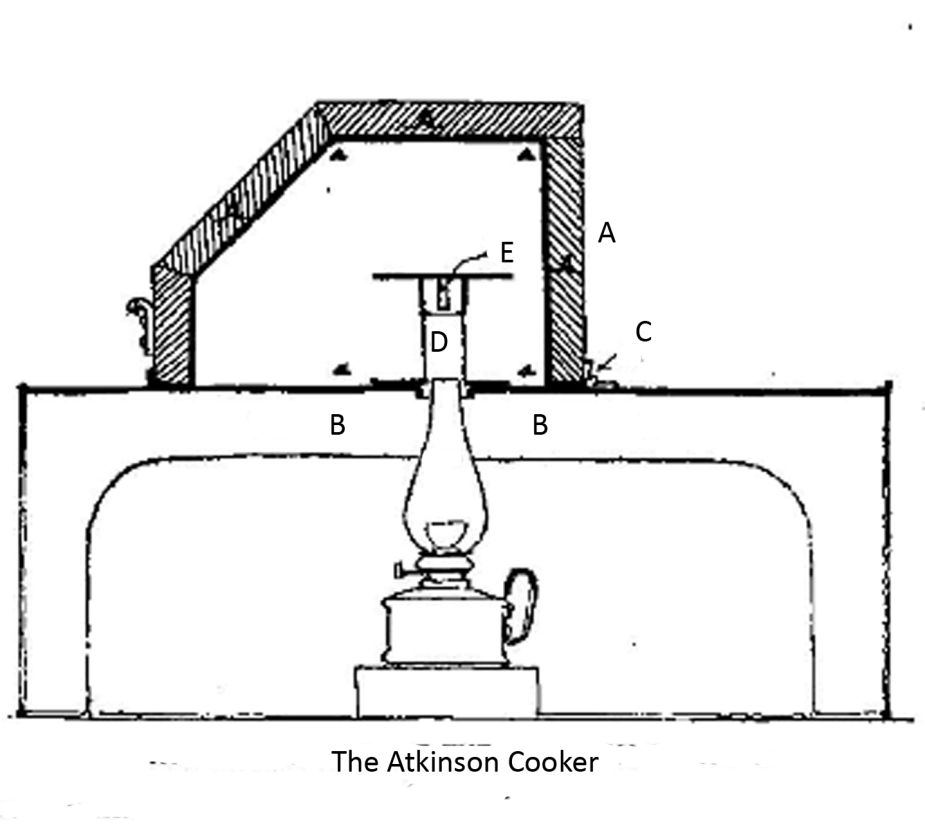
(A) A box made of pine or of whitewood, or any other wood of close texture least liable to warp or shrink. This box may be made of board or plank either one or two inches thick. The thicker the less radiation or loss of heat there will be. It should be lined with tin and the tin should be carried around the bottom edges and turned up outside, so that the wooden surfaces of the edges may not come in direct contact with the metallic top of the table on which the oven is to be placed. If the outside of this box is also covered with tin or sheet metal of any kind, it will become absolutely safe to make use of it night or day without any other precautions than due care of the lamp by which it is heated. But the outer covering of metal will make the box more expensive and is not required for day service under supervision.
(B) A metallic table, or a table with a metal top, on which the box is to be placed and to which it may be hinged. Hole in the middle two and one-half inches in diameter.
(C) Hinge
(D) A double tube open at the bottom over the lamp chimney and over the hole in the metallic table; both tubes may be open at the sides by openings to match each other, say half an inch in width by two inches in length on each quarter. The upper tube supporting a plate may be turned on the lower tube so as to open the way for direct heat to pass into the box through the openings for very quick work, or the upper tube may be turned upon the lower one so as to close these openings which are marked " E." For the ordinary processes of cooking they should be closed.
A handle is shown by which this box may be turned backward or end up. A convenient size would be to make the space indicated by the four letters " a, a, a, a," fourteen inches each way. In addition to that space will be the space within the box under the slant at the front. The object in adding this part under the slant is that the box may clear any cooking vessel which is placed on the tube over the lamp when it is turned upon end. Otherwise it is necessary to lift the box, which is an inconvenient method. In this space under the slant, vessels may be placed for cooking the materials which require a lesser degree of heat. The hottest place will be immediately over the lamp on the upper tube. The next hottest place will be around the tube " D." The lesser degree of heat will be in front under the slant. I prefer earthern jars and dishes to metal, except for roasting pans, broiling or sauteing.
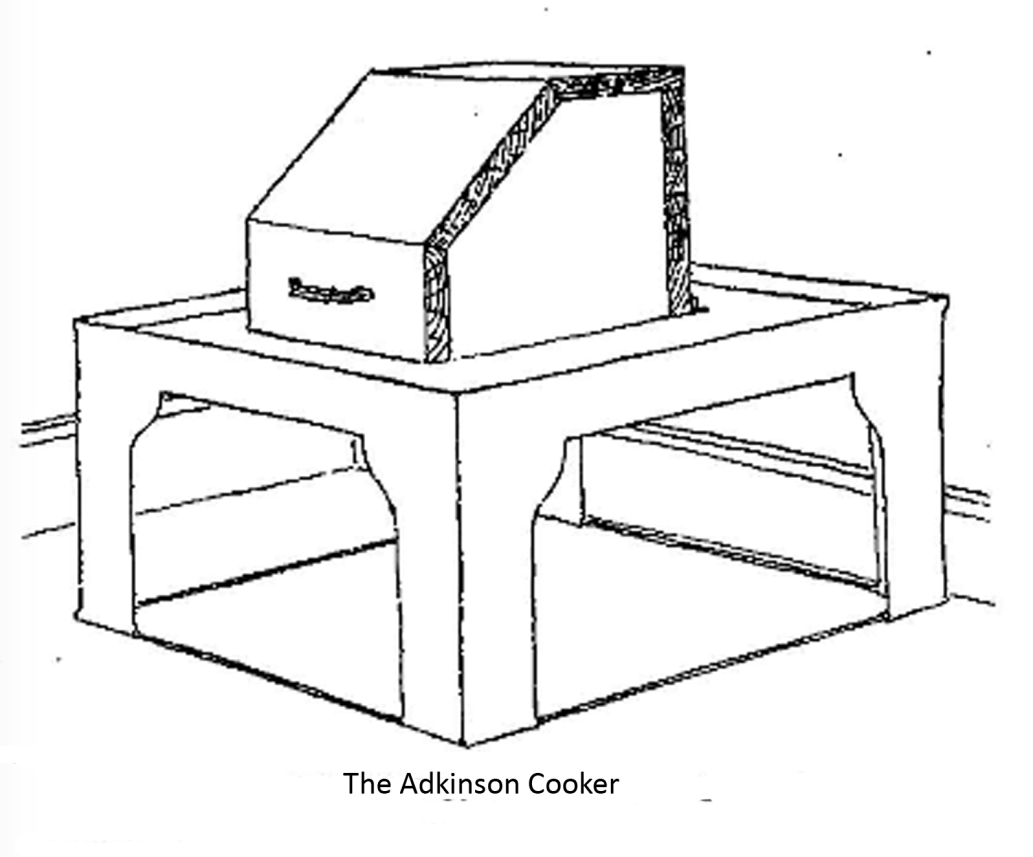
A second diagram of the oven is given in perspective upon a table wide enough on every side to hold the fragments of the wooden box, in the remote contingency that through carelessness it should be ignited by an excess of heat. The ordinary heat required for cooking appears to have no effect in scorching the wood. The heat may shrink even the best-seasoned wood, so that after a few weeks' use it will become expedient to drive a strip into the cracks which may have opened at the joints. The oven might also possibly be scorched and even ignited if the lamp were placed under the hole in the table without the tube or any other obstruction between it and the top of the box.
For the reason that this cooking apparatus is made of wood, which may in a very long period be carbonized or may possibly be ignited by careless use, I do not recommend it for night work unless it is placed upon a table on which the fragments may burn with- out risk; or unless the table is placed upon a brick or concrete floor where fragments of the cooking-box might burn without hazard. There is no other non-heat-conducting material so effective and so cheap as the compact kinds of wood, like whitewood or pine, and with common prudence they may be safely used.
Anybody can cook with this apparatus. Nobody can cook properly on an iron stove or range without wasting heat, time, temper and even skill ; it takes long practice to over-come the faults of the iron stove and of the fuel used in it, and then the results are often bad. The chief fault in cooking is cooking quickly at a high and varying temperature. One of the principal causes of indigestion is the chemical change which is wrought by a high heat upon the fats of meat. Dr. Pavey, one of the earliest investigators, uses the following language in his " Treatise on Food and Dietetics " : " Fat under a prolonged exposure to a strong heat undergoes decomposition attended with a production of fatty acids and an acrid volatile product known as acroline, which may cause derangement of a weak stomach."
This evil can be avoided by my methods of cooking. I have on record many instances of the cure" of dyspepsia and indigestion by the substitution of food cooked slowly at a moderate heat by the methods which I have promoted, proving conclusively what Dr. Pavey says. I have also two records of very puny children who needed meat and would not eat it when cooked in a cooking stove. Since my oven was adopted they have become stout and strong. I have become satisfied that about half the prevalent dyspepsia is due to semi-starvation because the victims cannot digest badly-cooked food. I am well satisfied that if any shrewd saloon-keeper who wants to make more money will make strong beef soup from the heads, palates and well-cleaned hoofs of beef cattle, or lentil broth from lentils, it will cost him less than his whiskey and beer now cost; and if put on tap alongside either, each will sell freely in place of the liquor or in addition, because more than half the craving for stimulants is due to want of well-cooked food.
Another Style Of Aladdin Oven
